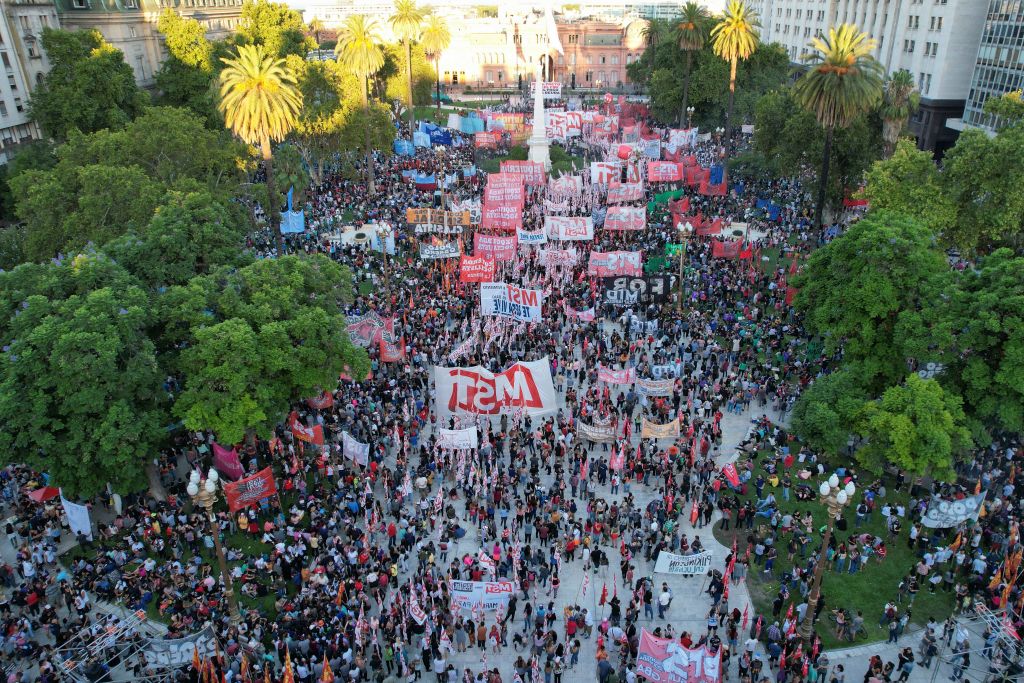The International Monetary Fund and the Argentine authorities announced in January that they had reached an understanding regarding the refinancing of the roughly $44.5 billion loan that the lender extended during the tenure of former President Mauricio Macri. As Alejandro Werner noted in his Feb. 14 article for AQ, “Argentina and the IMF: A Never Ending Story,” the agreement has been widely criticized for its anemic fiscal adjustment conditions. The credit rating agency Moody’s went so far as to predict that “the likelihood of a new [private sector] debt restructuring remains very high.” Inside Argentina, the detractors argued that any IMF-prescribed fiscal adjustment was too much, given the circumstances surrounding the incurrence of the loan. Both the Argentine legislature and the IMF’s Executive Board must now approve the deal. There is at least one way, however, in which IMF negotiators may be able to add a drop of honey to this medicine and improve the chances that the arrangement will receive the necessary approvals.
As befits an institution whose role is to lend to countries facing severe financial distress, borrowing from the IMF is relatively cheap. Unless, that is, you borrow a lot or for a long time. The Fund’s normal lending margin on loans from its General Resources Fund (the main lending platform) is just 100 basis points above the IMF’s own cost of funds (currently a modest nine basis points). But if the loan exceeds 187.5% of the borrowing country’s quota at the Fund, add another 200 basis points to the interest rate, and if the loan remains outstanding for more than 36 or 51 months (depending on the type of program), add a further 100 basis points. The Fund refers to these supplemental amounts as “surcharges.”
The IMF argues that these surcharges are needed to curb an overreliance by members on borrowings from the Fund and to encourage members to pay back their IMF loans early so that the money can be recycled into loans for other needy countries. A third justification candidly acknowledges that the surcharges are a useful source of income for the IMF, helping the organization pay its administrative expenses like pensions and contributing to the accumulation of cash reserves (called, in the mellifluous euphemism of the IMF, “precautionary balances”).
Fourteen countries are currently paying surcharges on their IMF loans. Argentina is, by far, the largest payor, accounting for over half of all surcharges being collected by the Fund. IMF loan surcharges are a sensitive subject, criticized both by member country borrowers and by civil society groups. We have elsewhere argued that a portion of the debt service payments on restructured sovereign debt instruments should be discharged by allowing the debtor country to fund, in local currency, environmentally-friendly projects at home. This improves the borrower’s external debt dynamics by conserving international reserves, while being simultaneously good for the debtor country’s economy and the planet. The same technique could easily be adapted to IMF surcharges, particularly on its massive loan to Argentina. All or a portion of the surcharges could, at the sovereign debtor’s option, be discharged by the funding of one or more pre-approved and independently monitored environment-friendly projects in the debtor country. That funding would represent the local currency equivalent of the displaced foreign currency surcharge. In Argentina’s case, this could be worth hundreds of millions of dollars or more.
What are the benefits? To the extent that surcharges are intended to encourage member countries to be economical in their borrowings from the Fund and to repay those loans quickly, those motivations would remain, albeit in a muted form. Local currency funding of environment-friendly projects in the debtor’s own country — while not as objectionable to the sovereign borrower as shipping foreign currency outside of the country in the form of debt service payments— is still a charge on the public fisc. If the IMF seeks to ration use of its lending capacity by increasing the cost of its loans, allowing a portion of that cost to be paid in local currency remains an expense for the debtor country. In addition, by reducing the demands on the sovereign borrower’s foreign currency reserves, this technique should hasten the day when the member country can return to normal market financing — the objective of IMF programs.
From the standpoint of the IMF, this technique would both dilute a caustic feature of its lending policy and demonstrate the Fund’s commitment to the global efforts on climate control. The projects being funded by the displaced surcharges could be administered by independent NGOs or UN agencies. They could involve, for example, fossil-fuel substitution, conservation easements, infrastructure resilience to climate-related events, and so forth, all measures that should enjoy the active political support of the Fund’s largest shareholders. Finally, applying this technique to the IMF’s Argentine loan would give the Argentine authorities a public relations win, which may be essential in this case, without forcing a corresponding public relations or policy loss on the Fund.
Signed,
Patrick Bolton, Columbia Business School and Imperial College London
Lee C. Buchheit, University of Edinburgh Law School (Honorary)
Beatrice Weder di Mauro, Graduate Institute of Geneva and INSEAD
Ugo Panizza, Graduate Institute of Geneva
Mitu Gulati, University of Virginia School of Law.
*****








